 | TODAY IN SCIENCE HISTORY NEWSLETTER - 23 MARCH |
| Feature for Today |
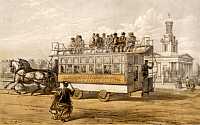 On 23 Mar 1861, the first horse-drawn tramcars began service in London. Although similar operations had already been established in America, France and even Ireland, it took the effort of American entrepreneur George Francis Train to introduce them to London. (Image from 1875) On 23 Mar 1861, the first horse-drawn tramcars began service in London. Although similar operations had already been established in America, France and even Ireland, it took the effort of American entrepreneur George Francis Train to introduce them to London. (Image from 1875)Before starting, he needed consent from officials to put iron rails into some London streets. These reduce friction, and make it far easier for a horse to pull many passengers on a carriage with flanged wheels. As with any new idea that threatens the livelihoods of those operating in the old way (here, with the horse-drawn road omnibus) he met with opposition. In 1860, Train published a 59-page booklet describing the merits of the tramcar. It included articles from newspapers expressing different opinions. You can read an extract from his appeal, addressed to the President of the Board of Trade, London, and gain a sense of what it took to establish this new form of transport. Train titled his booklet Observations on Horse Railways. |
| Book of the Day | |
| |
| Quotations for Today | |
| | "An egg is a chemical process, but it is not a mere chemical process. It is one that is going places—even when, in our world of chance and contingency, it ends up in an omelet and not in a chicken. Though it surely be a chemical process, we cannot understand it adequately without knowing the kind of chicken it has the power to become." |
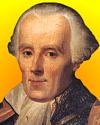 | "An intelligence which at a given instant knew all the forces acting in nature and the position of every object in the universe – if endowed with a brain sufficiently vast to make all necessary calculations – could describe with a single formula the motions of the largest astronomical bodies and those of the smallest atoms. To such an intelligence, nothing would be uncertain; the future, like the past, would be an open book." |
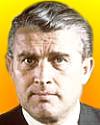 | "Our two greatest problems are gravity and paper work. We can lick gravity, but sometimes the paperwork is overwhelming." |
| QUIZ | |
| Before you look at today's web page, see if you can answer some of these questions about the events that happened on this day. Some of the names are very familiar. Others will likely stump you. Tickle your curiosity with these questions, then check your answers on today's web page. | |
| Births | |
 |  An engineer, born in Germany on 23 Mar 1912, moved to America after World War II, and played a prominent role in all aspects of rocketry and space exploration. An engineer, born in Germany on 23 Mar 1912, moved to America after World War II, and played a prominent role in all aspects of rocketry and space exploration. |
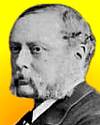 |  Richard Anthony Proctor, born 23 Mar 1837, was an English astronomer who in 1873 was the first to suggest that lunar craters were the result of meteor impacts. Richard Anthony Proctor, born 23 Mar 1837, was an English astronomer who in 1873 was the first to suggest that lunar craters were the result of meteor impacts.  What had previously been assumed to be the source of lunar craters before Proctor's proposal? What had previously been assumed to be the source of lunar craters before Proctor's proposal? |
| Deaths | |
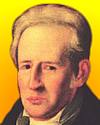 |  Andr�s Manuel Del Rio (1764-1849) discovered a new element (1801). While a professor of mineralogy in Mexico, Del Rio examined a specimen of brown lead from Zimapan and found a new metal, similar to chromium and uranium, which he name erythronium, after the red colour of one of its chemical compounds (Greek erythros, "red"). He was dissuaded by other chemists, and eventually regarded it as impure chromium. Swedish chemist Nils Gabriel Sefstr�m, rediscovered the element (1830) and named it after the Scandinavian goddess of beauty, because of its beautiful multi-coloured compounds. Andr�s Manuel Del Rio (1764-1849) discovered a new element (1801). While a professor of mineralogy in Mexico, Del Rio examined a specimen of brown lead from Zimapan and found a new metal, similar to chromium and uranium, which he name erythronium, after the red colour of one of its chemical compounds (Greek erythros, "red"). He was dissuaded by other chemists, and eventually regarded it as impure chromium. Swedish chemist Nils Gabriel Sefstr�m, rediscovered the element (1830) and named it after the Scandinavian goddess of beauty, because of its beautiful multi-coloured compounds.  What is the name of this element? What is the name of this element? |
| Events | |
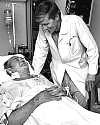 |  On 23 Mar of a certain year, Dr. Barney C. Clark who had been the first recipient of a permanent artificial heart, died at the University of Utah's Medical Center after 112 days with the device. On 23 Mar of a certain year, Dr. Barney C. Clark who had been the first recipient of a permanent artificial heart, died at the University of Utah's Medical Center after 112 days with the device.  In which decade was the first human permanent artificial heart implanted? In which decade was the first human permanent artificial heart implanted? |
 On 23 Mar 1965, America's first two-person space flight blasted off from Cape Kennedy with astronauts Virgil I. Grissom and John W. Young aboard. On 23 Mar 1965, America's first two-person space flight blasted off from Cape Kennedy with astronauts Virgil I. Grissom and John W. Young aboard. What was the name of their spacecraft? What was the name of their spacecraft? | |
| Answers |
When you have your answers ready to all the questions above, you'll find all the information to check them, and more, on the March 23 web page of Today in Science History. Or, try this link first for just the brief answers. Fast answers for the previous newsletter for March 22: cosmic rays; Cambrian; paddle-wheel; the decade including the year 1960; France. |
| Feedback |
 If you enjoy this newsletter, the website, or wish to offer encouragement or ideas, please send feedback by using your mail reader Reply button. If you enjoy this newsletter, the website, or wish to offer encouragement or ideas, please send feedback by using your mail reader Reply button. |
--
If you do not want to receive any more newsletters, Unsubscribe
To update your preferences and to unsubscribe visit this link



Δεν υπάρχουν σχόλια:
Δημοσίευση σχολίου